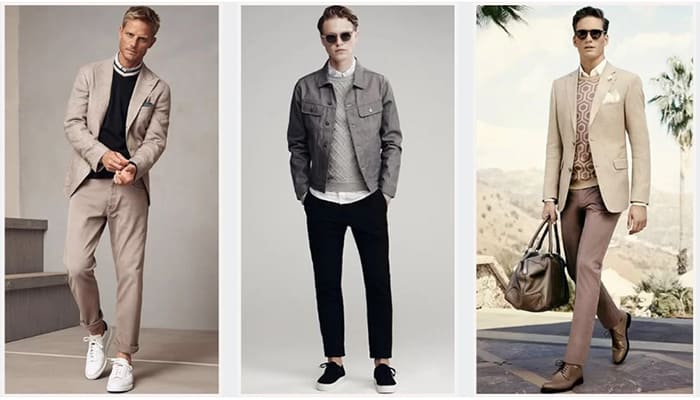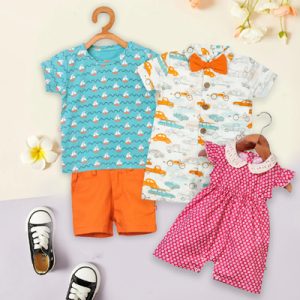
The dictionary definition of streetwear is simple: “fashionable, casual clothes.” But that doesn’t explain what has become a multi-billion-dollar industry with roots in countercultures, including graffiti, hip-hop, skating, and surfing.
The key to understanding this phenomenon lies in its community-based nature. The community of streetwear influencers, stylists, and editors is an important source of traction for brands looking to create top-selling collections.
Table of Contents
How Independent Brands are Disrupting the Fashi
The fashion industry is a behemoth generating over $2.5 trillion in revenues and employing over 300 million people. Although the industry is no stranger to sustainability initiatives, it remains one of the most resource-depleting industries in the world. Luckily, some forward-thinking brands try to make their mark in various ways. From top-of-the-line product development to a more cost-effective customer acquisition strategy, there are plenty of opportunities for the dot com to score a piece of the action.
Secondary Market Firms
Traditionally, secondary markets have been dominated by buyout-focused private equity firms and traditional asset managers, but the industry is rapidly expanding to include other strategies like credit, core infrastructure, sustainable investments, and fintech. With attractive returns, lower barriers to entry, and ample dry powder for new market entrants, secondaries are seeing robust growth.
A secondary market is where previously issued securities, such as stocks and bonds, are traded among investors. The proceeds from these sales go to the investors and not the original issuers. On the other hand, the primary market is where these securities are given for the first time.
While both markets play an important role in the economy, the secondary market is much more regulated and provides higher safety and predictability. It also gives companies the ability to control the public perception of their business and management decisions through their share prices.
Another key reason for the popularity of secondary markets is that they allow investors to access various company securities, without having to invest in one specific company. This allows investors to diversify their portfolios and make better investment decisions.
A secondary market is a platform where companies can sell or buy securities issued by the original issuers, including corporations and government entities. This marketplace allows investors to trade freely without the intervention of the original issuers and is a vital source of capital formation for the economy. As a result, secondary markets have helped enhance the economic condition of nations.
Direct-to-Consumer Model
Those in the fashion industry who want to grow their business in an efficient and sustainable way should look at implementing the direct-to-consumer (D2C) model. This business model bypasses third-party retailers, wholesalers, and other intermediaries to provide consumers with higher-quality products at competitive prices.
The benefits of this model include increased sales, improved profit margins, and better customer experience. D2C companies are also able to collect more information about their customers, which can help them better develop and tailor their products and services.
Direct-to-consumer companies can sell their products through various platforms, including websites and brick-and-mortar retail stores. The most successful D2C brands include Harry’s razors, Glossier, and Away luggage.
While implementing the D2C model does not guarantee success, it can be a great option for any brand looking to boost its online presence and increase consumer loyalty. However, if you are thinking about going D2C, it is important to consider the following tips:
Build a Brand
Developing a strong and recognizable brand that will resonate with your target market is essential. This will help you build trust and confidence in your company and will be the basis for future growth as your brand grows.
Determine Your Product Range and Price Points
Before deciding on your product range and pricing, it is important to consider your target audience and what they are looking for in their wardrobes. By knowing this, you will be able to create the right products for them at an affordable price point.
Build a Distribution System
The most effective direct-to-consumer companies make their products available to consumers via an e-commerce platform, which allows them to reach more people and increase their sales. They can also build a supply chain that includes production, logistics, and warehousing facilities.
To increase the profitability of this model, it is important to have a robust e-commerce order fulfillment process that can handle a large volume of orders. This may require a new warehouse or a partnership with a third-party e-commerce order fulfillment outsourcer.
Influencer Marketing
Influencer Marketing is one of the most powerful ways to build your brand and boost sales. It works by using social media and content to build a connection with people who already care about your brand’s values and are likely to recommend it.
A good way to start is by finding influencers with a similar audience to yours who are willing to work with you. You can search for them on popular social media platforms like Instagram, YouTube, Twitter, and TikTok.
In addition to gaining exposure, you can also earn money through this method. The influencers who share your brand’s message and promote its products get a commission for every sale they generate.
You can find a wide variety of people to collaborate with, from lifestyle bloggers to experts in your industry. Just be sure to check their content, followers, and engagement to see if it aligns with your goals.
For example, if your brand is sustainable, you should look for influencers that advocate minimalism or zero waste. This will give your brand a more authentic voice and increase your chances of a positive outcome.
Once you have found your ideal match, the next step is to decide how you will communicate with them. This will vary from posting your products on their Instagram Stories or collaborating with them on a video. It will also depend on the budget you have available.
Another option is to work with a team of influencers on a single campaign. This can be a great way to save time and money. The team will create and post the promotional content.
The influencers will then promote the product to their own followers. This will drive new customers to your website and social media accounts.
A common method is to have the influencer take a picture of themselves wearing your brand’s products. They then post the image and your brand’s logo on their social media account. This type of promotion is very effective and can reach many people.
As with all forms of influencer marketing, there are a few risks. Some influencers may use bots to engage with their followers, which can signify that they are not interested in your products or brand. They are more focused on boosting their own popularity, so they will not always have the best taste. You should also be careful to track the impact of your influencer marketing campaign to make sure it is successful and to avoid any problems down the line.
Follow – https://sggreek.com for More Updates


